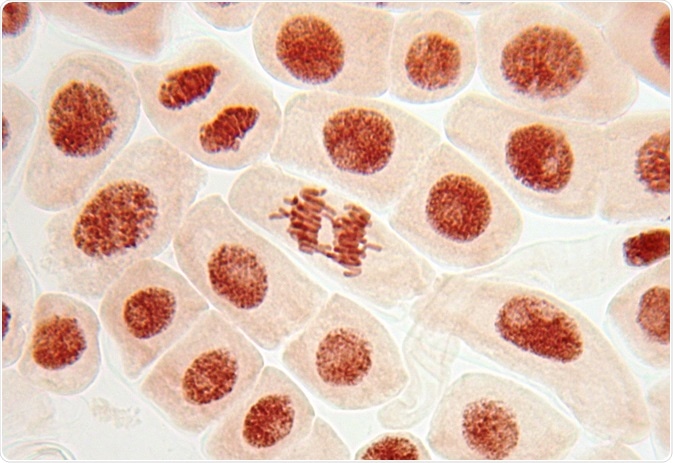LongSAGE, RL-SAGE and SuperSAGE are modifications of serial analysis of gene expression (SAGE).
 Credit: Dimarion/Shutterstock.com
Credit: Dimarion/Shutterstock.com
SAGE is a technology for identifying and quantifying mRNA expression in a sample. It can be used for a range of applications from profiling tumor cells to studying the biology of invertebrates.
Serial analysis of gene expression (SAGE) uses mRNA from a particular sample to create complementary DNA (cDNA) fragments which are amplified and sequenced using high-throughput sequencing technology.
The mechanism behind SAGE is based on tags which can identify the original transcript, and rapid sequencing of chains of tags linked together. The procedure essentially simplifies sequencing by linking the cDNA segments together in a long chain. The resulting analysis gives a snapshot of the transcriptome of the sample, including the identity and abundance of each mRNA.
LongSAGE
Long serial analysis of gene expression (LongSAGE) is an enhanced form of SAGE that generates tags that are 21 base pairs, rather than 14, as is typical with SAGE.
LongSAGE uses a different IIS restriction endonuclease, MmeI, with certain other modifications of the method to produce a longer tag. It is estimated that 99.8 percent of 21 bp tags occur just once in a genome the size of the human genome. Typical SAGE tags of 14 bp are only 80 percent unique.
LongSAGE has some limitations. There is a constant 4 bp sequence on every tag that is an artifact of restriction enzyme cleavage. There are also some genes that lack the necessary restriction site. Another problem is that LongSAGE tags only match a part of each gene. To get full-length gene sequences, additional analysis is required.
RL-SAGE
Robust LongSAGE is another variation on SAGE with some advantages over the original method. RL-SAGE has four improvements over LongSAGE:
- Uses only 50 ng of mRNA for library construction, compared to 2 ug for SAGE
- Enhanced cDNA adapter and ditag formation are carried out through a longer ligation period
- Only 20 ditag polymerase chain reactions are necessary for a complete library (about 90 percent less than previous methods)
- Concatemers are partially digested before cloning
The RL-SAGE protocol can generate two or three libraries, at 4.5 million tags, in one month.
SuperSAGE
SuperSAGE expands the SAGE tag size further, to 26 base pairs. The increased tag size even more precisely matches the tag to its transcript. SuperSAGE has been combined with high-throughput microarray technology to increase the power of the method further.
The SuperSAGE tag sequences were directly synthesized within the array to perform gene expression profiling for 1000 genes in the rice species Nicotania benthamiana.
DNA Microarray
Further Reading
Last Updated: Aug 23, 2023